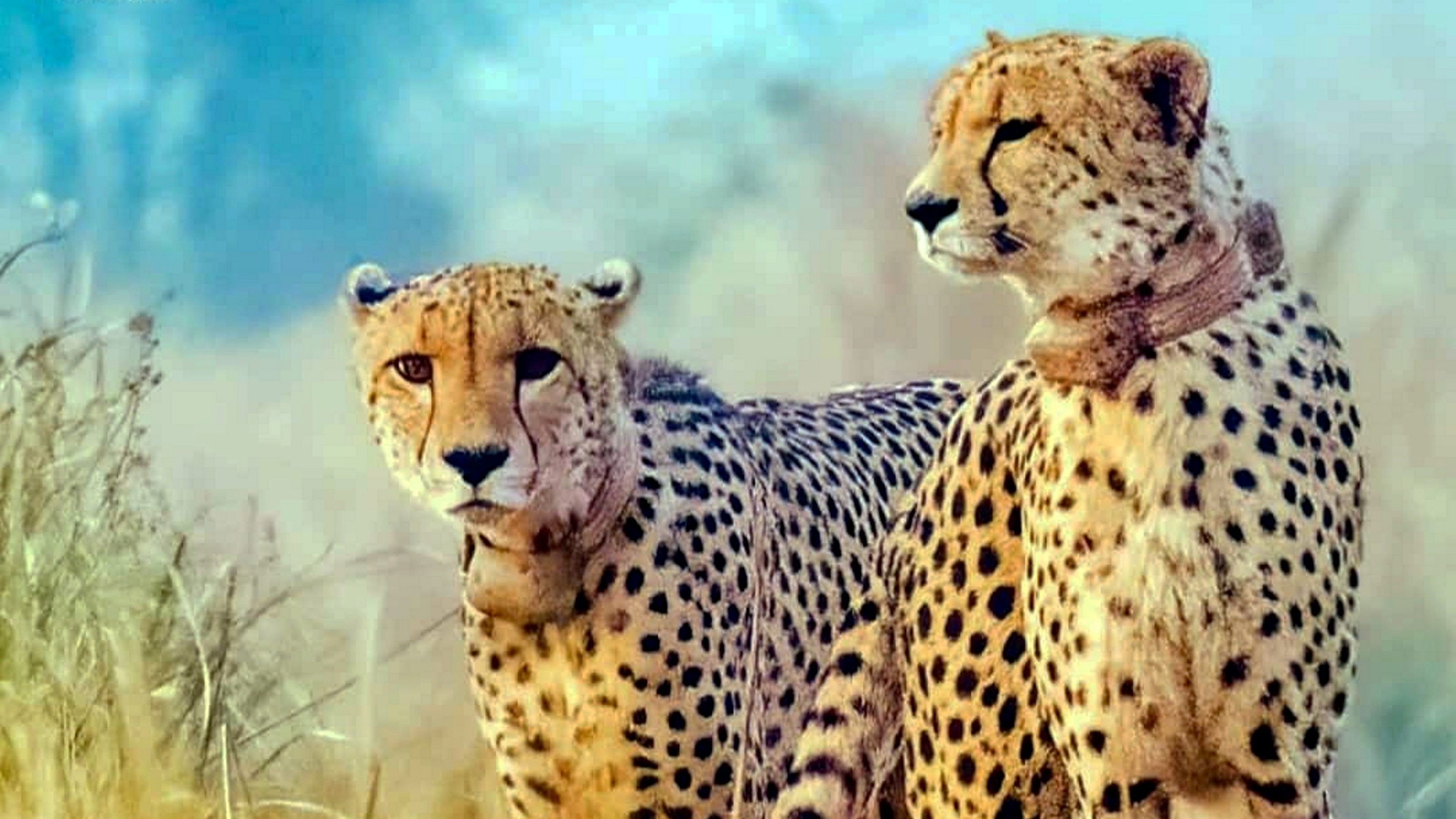
Multiple African cheetahs have died since they were introduced in India.
Credit: PTI File Photo
The deaths of six adult cheetahs and three cubs at the Kuno National Park despite having dedicated veterinary support and intensive monitoring was the biggest setback for the Centre’s project to introduce the African cheetah in India, experts said Friday on the eve of the first anniversary of the ambitious programme.
“In India we had dedicated veterinary support and intensive post release monitoring. It was assumed that these two factors would minimise the mortality rate next to zero, at least in the initial part of the project till the animals are released in the wild,” said Adrian Tordiffe, a veterinary wildlife specialist at the University of Pretoria.
“As it turned out, most of them died in the acclimatisation camp. This was a setback,” Tordiffe, one of the former foreign consultants to Project Cheetah, told DH.
India brought eight cheetahs from Namibia and the first two were released in Kuno National Park on September 17 last year by Prime Minister Narendra Modi. Subsequently another 12 were transported from South Africa in February this year.
Out of 20 adults, six died while the rest are now back in the enclosure after three of them developed skin infections under their collar. Also one female gave birth to a litter of four cubs but three died on a single day.
“We had mortality from factors that could have been avoided with better supervision, expertise, and coordination with experts,” said Yadvendradev Jhala, the former lead scientist of the project, who retired as the dean of Wildlife Institute of India, Dehradun.
The experts' opinions come amidst the government's claims that such deaths in the world’s first trans-continental wild cheetah translocation programme are within the acceptable parameters and don’t necessarily mean a setback.
Wildlife biologists and conservation specialists DH spoke to suggested a pause on importing more animals from South Africa till a second site was ready.
“The endeavour to establish free-ranging, wild cheetahs in India is still in its embryonic stage,” noted Arjun Gopalswamy, chief scientist at Carnassials Global, who studies big cats like lions and cheetahs. “The rewilding process, in its true sense, hasn't officially started, as the existing cheetahs have been returned to their enclosures,” he added.
"As we near the first anniversary of the arrival of the first batch of eight African cheetahs from Namibia, all the surviving cheetahs are in captivity, 14 adults and one cub. Such prolonged periods of captivity will reduce the fitness of these cats to be released in the wild," observed Ravi Chellam CEO, Metastring Foundation & Coordinator, Biodiversity Collaborative.
SP Yadav, member secretary, National Tiger Conservation Authority (NTCA), which is implementing the project, said the animals in the enclosure would be considered for release in the wild after the onset of winter.
Even though importing the next batch of cheetahs from South Africa may not happen before April-May next year, experts say sufficient extent of suitable habitat will be a fundamental requirement for the cheetahs to establish themselves as free-ranging wild animals.
“Our focus needs to be on this if we are serious about this project. All other actions will make no real difference in terms of achieving the goals of the project,” Chellam said.
Yadav explained that alternative sites were being prepared at Gandhi Sagar Wildlife Sanctuary and also at Nauradehi Wildlife Sanctuary in Madhya Pradesh. “Gandhi Sagar is expected to be ready by the year-end. After site evaluation, the next import will be planned for Gandhi Sagar,” he added.
